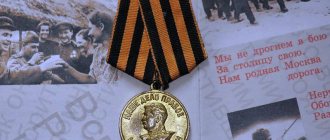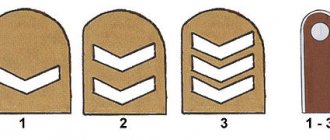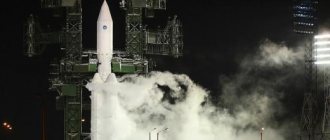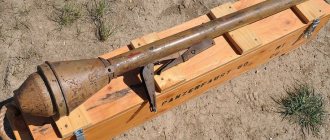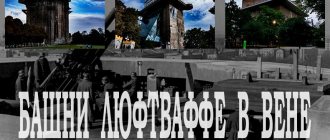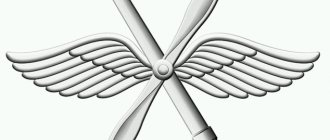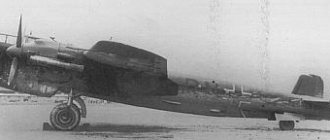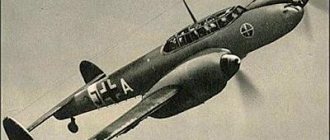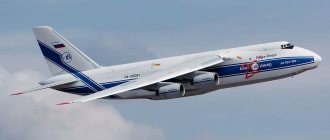The air force plays one of the key roles during any war. Sometimes a timely sortie of aircraft can change the outcome of a battle. However, the air “machines” themselves will not do anything without competent pilots. Among these pilots there are also those who deserve the title of “ace pilot”, for the large number of destroyed enemy aircraft. Such pilots were in the Luftwaffe of the Third Reich.
Erich Hartmann
The most successful fighter pilot of Nazi Germany was Erich Hartmann. He is also recognized as the most successful pilot in the entire world history of aviation. Taking part in battles on the side of Germany, he made 1,404 combat missions, as a result of which he scored 352 victories over the enemy, most of them - 347 - were downed USSR aircraft. Eric won these victories while taking part in 802 battles with the enemy. Hartman shot down the last enemy aircraft on May 8, 1945.
Eric came from a middle-class family with two sons. The younger brother was also a Luftwaffe pilot. Eric's mother was also interested in aviation, and was among the first women to fly an airplane. The family even had a light plane, but it had to be sold due to lack of money in the family. Soon his mother set up a flight school, where Eric trained. Soon he becomes an instructor in the Hitler Youth.
In 1939 he entered the gymnasium in Korntal, where his sniper abilities were revealed, and at the end of his training he was an excellent fighter pilot. In the fall of 1942, after graduation, he was sent to the North Caucasus. Because of his youthful appearance, he received the nickname “Baby” among the pilots. Eric shot down the first enemy plane in November 1942, but the Battle of Kursk was the most effective for him; in September 1943, he had about ninety downed planes.
His victories were often questioned by the Luftwaffe and were rechecked three or four times, and during the flight he was followed by an observer plane. For his numerous victories, Hartmann was awarded the highest orders and medals in Germany. He was awarded the Knight's Cross of the Iron Cross with Oak Leaves, Swords and Diamonds. After the war he ended up in a Soviet camp, where he had to stay for ten years, after returning he served in the German aviation, and died in 1993.
Gerhard Barkhorn
The second place in the number of enemy aircraft shot down belongs to Gerhard Barkhorn. During his combat career, he flew more than 1,100 combat missions and destroyed 301 enemy aircraft, all of his effective missions during battles with the Soviet Union. Gerhard's flying career began after he joined the Luftwaffe in 1937.
He made his first flight as a fighter pilot in May 1940 while fighting in France. Barkhorn made his first successful flight in the Eastern direction in July 1941. From that moment on, he became the real “master of the sky.” And at the end of 1942, he already had 100 downed planes. After shooting down the 250th plane, Gerhard is awarded the Knight's Cross, later oak leaves and Swords are added to this award. However, he never received the highest award for shooting down three hundred planes - Diamonds to the Knight's Cross, since in the winter of 1945 he was transferred to the Western Front, which happened a couple of days after the downing of the three hundredth plane.
On the Western Front, he led JG 6, but did not make a single effective mission. In April, Barkhorn was transferred to a jet plane; he was soon wounded and captured by Allied forces, but was released in 1946. Soon he entered military service in Germany, where he remained until 1976. Gerhard Berkhorn died in 1983 as a result of a car accident.
Luftwaffe aces: the phenomenon of too many bills
... the squadron in a fairly short period of time lost 80 pilots,
of whom 60 never shot down a single Russian aircraft /Mike Speake “Aces of the Luftwaffe”/ The
“Iron Curtain” collapsed with a deafening roar, and a storm of revelations of Soviet myths. The theme of the Great Patriotic War became the most popular - inexperienced Soviet people were shocked by the results of German aces - tank crews, submariners and, especially, Luftwaffe pilots. Actually, the problem is this: 104 German pilots have a record of 100 or more downed aircraft. Among them are Erich Hartmann (352 victories) and Gerhard Barkhorn (301), who showed absolutely phenomenal results. Moreover, Harmann and Barkhorn won all their victories on the Eastern Front. And they were no exception - Gunther Rall (275 victories), Otto Kittel (267), Walter Nowotny (258) - also fought on the Soviet-German front.
At the same time, the 7 best Soviet aces: Kozhedub, Pokryshkin, Gulaev, Rechkalov, Evstigneev, Vorozheikin, Glinka were able to overcome the bar of 50 enemy aircraft shot down. For example, Three-time Hero of the Soviet Union Ivan Kozhedub destroyed 64 German aircraft in air battles (plus 2 American Mustangs shot down by mistake). Alexander Pokryshkin is a pilot about whom, according to legend, the Germans warned by radio: “Akhtung! Pokryshkin in der luft!”, chalked up “only” 59 aerial victories. The little-known Romanian ace Constantin Contacuzino has approximately the same number of victories (according to various sources, from 60 to 69). Another Romanian, Alexandru Serbanescu, shot down 47 aircraft on the Eastern Front (another 8 victories remained “unconfirmed”).
The situation is much worse for the Anglo-Saxons. The best aces were Marmaduke Pettle (about 50 victories, South Africa) and Richard Bong (40 victories, USA). In total, 19 British and American pilots managed to shoot down more than 30 enemy aircraft, while the British and Americans fought on the best fighters in the world: the inimitable P-51 Mustang, P-38 Lightning or the legendary Supermarine Spitfire! On the other hand, the best ace of the Royal Air Force did not have the opportunity to fight on such wonderful aircraft - Marmaduke Pettle won all his fifty victories, flying first on the old Gladiator biplane, and then on the clumsy Hurricane. Against this background, the results of the Finnish fighter aces look completely paradoxical: Ilmari Yutilainen shot down 94 aircraft, and Hans Wind - 75.
What conclusion can be drawn from all these numbers? What is the secret of the incredible performance of Luftwaffe fighters? Maybe the Germans simply didn’t know how to count? The only thing that can be stated with a high degree of confidence is that the accounts of all aces, without exception, are inflated. Extolling the successes of the best fighters is a standard practice of state propaganda, which by definition cannot be honest.
German Meresyev and his “Stuka”
As an interesting example, I propose to consider the incredible story of bomber pilot Hans-Ulrich Rudel. This ace is less known than the legendary Erich Hartmann. Rudel practically did not participate in air battles; you will not find his name in the lists of the best fighters. Rudel is famous for having flown 2,530 combat missions. He piloted the Junkers 87 dive bomber and at the end of the war took the helm of the Focke-Wulf 190. During his combat career, he destroyed 519 tanks, 150 self-propelled guns, 4 armored trains, 800 trucks and cars, two cruisers, a destroyer, and seriously damaged the battleship Marat. In the air he shot down two Il-2 attack aircraft and seven fighters. He landed on enemy territory six times to rescue the crews of downed Junkers. The Soviet Union placed a reward of 100,000 rubles on the head of Hans-Ulrich Rudel.
Just an example of a fascist
He was shot down 32 times by return fire from the ground. In the end, Rudel's leg was torn off, but the pilot continued to fly on a crutch until the end of the war. In 1948, he fled to Argentina, where he became friends with dictator Peron and organized a mountaineering club. Climbed the highest peak of the Andes - Aconcagua (7 kilometers). In 1953 he returned to Europe and settled in Switzerland, continuing to talk nonsense about the revival of the Third Reich. Without a doubt, this extraordinary and controversial pilot was a tough ace. But any person accustomed to thoughtfully analyzing events should have one important question: how was it established that Rudel destroyed exactly 519 tanks?
Of course, there were no photographic machine guns or cameras on the Junkers. The maximum that Rudel or his gunner-radio operator could notice: covering a column of armored vehicles, i.e. possible damage to tanks. The dive recovery speed of the Yu-87 is more than 600 km/h, the overload can reach 5g, in such conditions it is impossible to accurately see anything on the ground. Since 1943, Rudel switched to the Yu-87G anti-tank attack aircraft. The characteristics of this “laptezhnika” are simply disgusting: max. speed in horizontal flight is 370 km/h, rate of climb is about 4 m/s. The main weapons of the aircraft were two VK37 cannons (caliber 37 mm, rate of fire 160 rounds/min), with only 12 (!) rounds of ammunition per barrel. Powerful guns installed in the wings, when firing, created a large turning moment and rocked the light aircraft so much that firing in bursts was pointless - only single sniper shots.
Ju-87G
And here is a funny report on the results of field tests of the VYa-23 aircraft gun: in 6 flights on the Il-2, the pilots of the 245th assault air regiment, with a total consumption of 435 shells, achieved 46 hits in a tank column (10.6%). We must assume that in real combat conditions, under intense anti-aircraft fire, the results will be much worse. What's a German ace with 24 shells on board a Stuka!
Further, hitting a tank does not guarantee its defeat. An armor-piercing projectile (685 grams, 770 m/s), fired from a VK37 cannon, penetrated 25 mm of armor at an angle of 30° from the normal. When using sub-caliber ammunition, armor penetration increased by 1.5 times. Also, due to the aircraft’s own speed, armor penetration in reality was approximately another 5 mm greater. On the other hand, the thickness of the armored hull of Soviet tanks was less than 30-40 mm only in some projections, and it was impossible to even dream of hitting a KV, IS or heavy self-propelled gun in the forehead or side. In addition, breaking through armor does not always lead to the destruction of a tank. Trains with damaged armored vehicles regularly arrived in Tankograd and Nizhny Tagil, which were quickly restored and sent back to the front. And repairs to damaged rollers and chassis were carried out right on site. At this time, Hans-Ulrich Rudel drew himself another cross for the “destroyed” tank.
Another question for Rudel is related to his 2,530 combat missions. According to some reports, in the German bomber squadrons it was customary to count a difficult mission as an incentive for several combat missions. For example, captured captain Helmut Putz, commander of the 4th detachment of the 2nd group of the 27th bomber squadron, explained the following during interrogation: “... in combat conditions I managed to make 130-140 night sorties, and a number of sorties with a complex combat mission were counted towards me , like others, in 2-3 flights.” (interrogation protocol dated June 17, 1943). Although it is possible that Helmut Putz, having been captured, lied, trying to reduce his contribution to the attacks on Soviet cities.
Hartmann against everyone
There is an opinion that ace pilots filled their accounts without any restrictions and fought “on their own,” being an exception to the rule. And the main work at the front was performed by semi-qualified pilots. This is a deep misconception: in a general sense, there are no “averagely qualified” pilots. There are either aces or their prey. For example, let’s take the legendary Normandie-Niemen air regiment, which fought on Yak-3 fighters. Of the 98 French pilots, 60 did not win a single victory, but the “selected” 17 pilots shot down 200 German aircraft in air battles (in total, the French regiment drove 273 aircraft with swastikas into the ground). A similar picture was observed in the US 8th Air Force, where out of 5,000 fighter pilots, 2,900 did not achieve a single victory. Only 318 people recorded 5 or more downed aircraft. American historian Mike Spike describes the same episode related to the actions of the Luftwaffe on the Eastern Front: “... the squadron lost 80 pilots in a fairly short period of time, of which 60 never shot down a single Russian aircraft.” So, we found out that ace pilots are the main strength of the Air Force. But the question remains: what is the reason for the huge gap between the performance of the Luftwaffe aces and the pilots of the Anti-Hitler Coalition? Even if we split the incredible German bills in half?
One of the legends about the inconsistency of the large accounts of German aces is associated with an unusual system for counting downed aircraft: by the number of engines. Single-engine fighter - one plane shot down. Four-engine bomber - four aircraft shot down. Indeed, for pilots who fought in the West, a parallel scoring was introduced, in which for the destruction of a “Flying Fortress” flying in battle formation, the pilot was credited with 4 points, for a damaged bomber that “fell out” of the battle formation and became easy prey other fighters, the pilot was given 3 points, because he did the bulk of the work - breaking through the hurricane fire of the “Flying Fortresses” is much more difficult than shooting down a damaged single aircraft. And so on: depending on the degree of participation of the pilot in the destruction of the 4-engine monster, he was awarded 1 or 2 points. What happened next with these reward points? They were probably somehow converted into Reichsmarks. But all this had nothing to do with the list of downed aircraft.
The most prosaic explanation for the Luftwaffe phenomenon: the Germans had no shortage of targets. Germany fought on all fronts with a numerical superiority of the enemy. The Germans had 2 main types of fighters: Messerschmitt 109 (34 thousand were produced from 1934 to 1945) and Focke-Wulf 190 (13 thousand fighter version and 6.5 thousand attack aircraft were produced) - a total of 48 thousand fighters. At the same time, about 70 thousand Yaks, Lavochkins, I-16s and MiG-3s passed through the Red Army Air Force during the war years (excluding 10 thousand fighters delivered under Lend-Lease). In the Western European theater of operations, Luftwaffe fighters were opposed by about 20 thousand Spitfires and 13 thousand Hurricanes and Tempests (this is how many vehicles served in the Royal Air Force from 1939 to 1945). How many more fighters did Britain receive under Lend-Lease? Since 1943, American fighters appeared over Europe - thousands of Mustangs, P-38s and P-47s plowed the skies of the Reich, accompanying strategic bombers during raids. In 1944, during the Normandy landings, Allied aviation had a six-fold numerical superiority. “If there are camouflaged planes in the sky, it’s the Royal Air Force, if they’re silver, it’s the US Air Force. If there are no planes in the sky, it’s the Luftwaffe,” German soldiers joked sadly. Where could British and American pilots get large bills under such conditions? Another example is the Il-2 attack aircraft, which became the most popular combat aircraft in the history of aviation. During the war years, 36,154 attack aircraft were produced, of which 33,920 Ilovs entered the army. By May 1945, the Red Army Air Force included 3,585 Il-2s and Il-10s, and another 200 Il-2s were in naval aviation.
In a word, the Luftwaffe pilots did not have any superpowers. All their achievements can only be explained by the fact that there were many enemy aircraft in the air. The Allied fighter aces, on the contrary, needed time to detect the enemy - according to statistics, even the best Soviet pilots had an average of 1 air battle per 8 sorties: they simply could not meet the enemy in the sky! On a cloudless day, from a distance of 5 km, a World War II fighter is visible like a fly on a window pane from the far corner of the room. In the absence of radar on aircraft, air combat was more of an unexpected coincidence than a regular event. It is more objective to count the number of downed aircraft, taking into account the number of combat sorties of pilots. Viewed from this angle, Erich Hartmann's achievement fades: 1,400 combat missions, 825 air combats and "only" 352 aircraft shot down. Walter Novotny has a much better figure: 442 sorties and 258 victories.
Friends congratulate Alexander Pokryshkin (far right) on receiving the third star of the Hero of the Soviet Union
It is very interesting to trace how ace pilots began their careers. The legendary Pokryshkin, in his first combat missions, demonstrated aerobatic skill, audacity, flight intuition and sniper shooting. And the phenomenal ace Gerhard Barkhorn did not score a single victory in his first 119 missions, but he himself was shot down twice! Although there is an opinion that not everything went smoothly for Pokryshkin either: his first plane shot down was the Soviet Su-2. In any case, Pokryshkin has his own advantage over the best German aces. Hartman was shot down fourteen times. Barkhorn - 9 times. Pokryshkin was never shot down! Another advantage of the Russian miracle hero: he won most of his victories in 1943. In 1944-45. Pokryshkin shot down only 6 German aircraft, focusing on training young personnel and managing the 9th Guards Air Division.
In conclusion, it is worth saying that you should not be so afraid of the high bills of Luftwaffe pilots. This, on the contrary, shows what a formidable enemy the Soviet Union defeated, and why Victory has such high value.
Gunther Rall
The 52nd fighter squadron, where Hartmann and Barkhorn served, also served as the third-ranked ace pilot, Günter Rall. He flew a Misserschmitt, with personal number 13. Having completed 621 combat missions, Gunther was able to destroy 275 enemy aircraft, most in the Soviet direction and only three on the Western Front. His plane was shot down eight times, and the pilot himself was wounded three times.
Rall entered military service in 1936, and initially he joined an infantry regiment, but soon transferred to the Luftwaffe. He took part in the war from the beginning of the French campaign, and already in May 1940 he shot down the first Curtis -36 fighter; a couple of days later he already had two aircraft to his name. At the beginning of the summer of 1941, he received a transfer to the Eastern Front, and in November 1941, having already had 35 effective sorties to his name, he was seriously wounded. It took nine months to recover from the wound; after leaving the hospital, Rall received a knight's cross for 65 downed aircraft, and two months later the Oak Leaves from the hands of the Fuhrer were added to it for 100 victories.
A year later, in the summer of 1943, Gunther became the commander of the third group, and at the end of the summer he received the Swords to his Knight's Cross for 200 destroyed aircraft. In the spring, Gunther already had 273 aircraft shot down. In April, he was appointed commander of the second group in the air defense of the Third Reich, while in this position Günther shot down two more planes, and in mid-May 1944, while repelling the first mass raid of American fighters on the Reich oil industrial complex, Rall shot down his last plane. During this battle, the ace pilot was seriously injured, as a result of which he was prohibited from flying, so he transferred to the position of head of the fighter pilot school.
After the surrender of Germany, Gunther had to work in industry for some time, and later he entered service in the German aviation. While serving in the Air Force, he took part in the development of the F-104 fighter aircraft. Günter Rall's military career ended in 1975 as a member of the NATO military committee. Rall was the only German ace pilot to survive the 20th century, and died in 2009.
Otto Kittel
German fighter pilot Otto Kittel is fourth in the ranking of Luftwaffe aces. He had five hundred and eighty-three combat missions to his name with a total of 267 victories. It went down in the history of the Luftwaffe as the fighter that destroyed the largest number of Il-2s, a total of ninety-four aircraft. Kittel was born in the town of Kronsdorf, and in 1939 he entered the Luftwaffe, where he soon received the rank of non-commissioned officer. For the first time at the controls of a fighter aircraft, he participated in a battle in April 1941 in Yugoslavia, but Otto was plagued by failures, he was unable to shoot down enemy planes, and at the end of May the engine failed during a flight and Otto ejected.
From the first days of the opening of the Eastern Front, he was transferred there by the leadership. And just two days later he shot down his first two SB-2 aircraft. A couple of days later, two more Il-2s were shot down. For his achievements, shooting down 12 aircraft, at the end of 1941 he was nominated for the Iron Cross 1st and 2nd class. In 1942 he was already flying as a wingman, and at the end of the year he had more than twenty successful attacks. In February 1943, he received the Golden German Cross for forty aircraft shot down. In March 1943, during an air battle, his plane’s engine failed, and he landed it on USSR territory near Lake Ilmen. To avoid being captured, Kittel walked more than sixty kilometers in the cold and forded a river, but still reached his troops.
In the fall of 1943, he was sent as an instructor to France, he already had 130 downed aircraft, but in 1944 he was returned to the Soviet direction. After his victory count reached 200 in the fall, he was sent on leave while already holding the rank of lieutenant. During his entire service, his plane was shot down by the enemy twice. At the beginning, 1945, in the Baltic states, he was shot down for the third time, the plane fell into a swamp, Kittel did not have time to eject, as he died in the air. For his victories he was awarded the German Golden Cross and the Knight's Cross with Swords and Oak Leaves.
Symbols and abbreviations used
Luftwaffe military ranks
Flig. (Fliger) - fliger (corresponding to the rank of private in the Red Army Air Force).
Gefr. (Gefreiter) - corporal (corresponding to the same rank in the Red Army Air Force).
Obgefr. (Obergefreiter) - chief corporal.
Hptgefr. (Hauptgefreiter) – Haupt-corporal.
Uffz. (Unteroffizier) - non-commissioned officer (roughly equivalent to the rank of junior sergeant in the Red Army Air Force).
Uffw. (Unterfeldwebel) - non-commissioned sergeant major.
Fw. (Feldwebel) - sergeant major (roughly equivalent to the rank of sergeant in the Red Army Air Force).
Fhjr. (Fahnenjunker) – fanen-junker. The rank was assigned to candidates for the rank of officer and actually corresponded to the rank of sergeant major.
Fhr. (Fänrich) - fenrich. Like the previous one, it was given to officer candidates and corresponded to the rank of sergeant major.
Obfw. (Oberfeldwebel) - chief sergeant major (roughly equivalent to the rank of senior sergeant in the Red Army Air Force).
Obfhr. (Oberfänrich) - Ober-Fenrich. The rank was assigned to candidates for the rank of officer and actually corresponded to the rank of chief sergeant major.
Stbfw. (Stabsfeldwebel) - staff sergeant major (roughly equivalent to the rank of sergeant major in the Red Army Air Force).
Lt. (Leutnant) - lieutenant (corresponded to the same rank in the Red Army Air Force).
Oblt. (Oberleutnant) – chief lieutenant (corresponding to the rank of senior lieutenant in the Red Army Air Force).
Hptm. (Hauptmann) – Hauptmann (corresponding to the rank of captain in the Red Army Air Force).
Major - major (corresponded to the same rank in the Red Army Air Force).
Obstlt. (Oberstleutnant) – oberst-lieutenant (corresponding to the rank of lieutenant colonel in the Red Army Air Force).
Oberst - oberst (corresponding to the rank of colonel in the Red Army Air Force).
GMr. (Generalmajor) - major general (corresponded to the same rank in the Red Army Air Force).
GLt. (Generalleutnant) – lieutenant general (corresponded to the same rank in the Red Army Air Force).
Luftwaffe units and formations
Aufkl.Gr. (Auflärungsgruppe) - reconnaissance air group. Had a digital designation.
Einsatzstaffel - a combat squadron, usually as part of a combat training air group.
EJG (Ergänzungs-Geschwader) - combat training squadron. Had a digital designation.
Erg.JGr. (Ergänzungs-Jagdgruppe) - combat training fighter air group. Received a designation corresponding to the area of its original location, for example - EJGr.Ost.
EKdo (Erprobungskommando) – experienced command. Usually created for combat testing of new aircraft, weapons or new tactics. It had a numerical designation or was called by the name of the commander.
Erg.Staffel (Ergänzungs-Staffel) – combat training squadron.
Flieger-Division - an air division (in terms of staff it was approximately equivalent to the air corps in the Red Army Air Force). Had a digital designation.
Flieger-Schuldivision - training air division. Had a digital designation.
Jafü (Jagdfliegerführer) - Fighter Command. It was created on a territorial basis for the operational management of the actions of fighter units in a certain area. It had a digital designation or the name of the area in which it was located.
Jagddivision is a fighter air division (in terms of staff it roughly corresponds to the air corps in the Red Army Air Force). Had a digital designation.
JFS (Jagdfliegerschule) - fighter aviation school. Had a digital designation.
JG (Jagdgeschwader) - a fighter squadron (in terms of staff it roughly corresponded to a division in the Red Army Air Force). It had a numerical designation, and some squadrons additionally received an honorary name. The groups comprising the squadron were designated by Roman numerals, for example II./JG3. Squadrons were designated by Arabic numerals, and they had continuous numbering within the squadron, regardless of the number of the group they belonged to, for example 1./JG2, 8./JG51, etc.
JGr. (Jagdgruppe) - a separate fighter group (in terms of staff it roughly corresponded to a regiment in the Red Army Air Force).
JV (Jagdverband) is a separate fighter formation.
KG (Kampfgeschwader) - bomber squadron. It had a numerical designation, and some squadrons additionally received an honorary name.
Küstenjagdstaffel - a shore-based fighter squadron from naval aviation
LG (Lehrgeschwader) is an experienced combat squadron. Had a digital designation. Usually it included several groups for different purposes, used to practice the combat use of new equipment.
Platzschutzstaffel - a fighter squadron that carried out air defense of a specific target.
Stabsstaffel - a separate fighter squadron at the headquarters of the fighter squadron.
StG (Sturzkampfgeschwader) - a squadron of dive bombers. It had a numerical designation, and some squadrons additionally received an honorary name.
Tr.Gr. (Trägergruppe) - a deck-based air group.
ZG (Zerstörergeschwader) - a squadron of so-called “destroyer aircraft”, which were actually long-range heavy fighters. It had a numerical designation, and some squadrons additionally received an honorary name.
Allied air units
FS (Fighter Squadron) is a fighter squadron of the United States Air Force. Had a digital designation.
FG (Fighter Group) is a fighter group within the US Air Force. Had a digital designation.
GC (Groupe de Chasse) is a fighter group in the French Air Force.
Sqdn. (Squadron) is a squadron of the Royal Air Force (RAF). Had a digital designation.
IAP is a fighter aviation regiment within the Red Army Air Force.
OIAE is a separate fighter squadron in the Red Army Air Force.
German military awards
EKII (das Eiserne Kreuz 2.Klasse) – Iron Cross 2nd class. Established on March 10, 1813 as a reward for personal bravery during the war. Awarding was resumed on September 1, 1939.
EKI (das Eiserne Kreuz 1.Klasse) – Iron Cross 1st class. Established on March 10, 1813 as a reward for personal bravery during the war. Awarding was resumed on September 1, 1939.
DK-G (Deutsches Kreuz in Gold) – German Cross in Gold. Established on September 28, 1941 as a reward for military merit. It was considered as an “intermediate” step between the Iron Cross 1st class and the Knight's Cross. However, in the future it was also awarded to pilots who had already become holders of the Knight's Cross.
RK (Ritterkreuz des Eisernen Kreuz) – Knight's Cross. Established 09/01/1939
RK-EL (Ritterkreuz des Eisernen Kreuz mit Eichenlaub) – Knight's Cross with Oak Leaves. Established on July 3, 1940. Each award had a personal number.
RK-S (Ritterkreuz des Eisernen Kreuz mit dem Eichenlaub mit Schwerten) – Knight's Cross with Oak Leaves and Swords. Established on June 21, 1941. Each award had a personal number.
RK-Br (Ritterkreuz des Eisernen Kreuz mit dem Eichenlaub mit Schwerten mit Brillianten) – Knight's Cross with Oak Leaves, Swords and Diamonds. Established on July 15, 1941. Each award had a personal number.
Luftwaffe special awards
EP (Ehrenpokal für besondere Leistungen im Luftkrieg) – Cup of honor for special achievements in air warfare. It was made of silver and depicted two eagles fighting each other.
Walter Nowotny
The top five German pilots are aces Walter Nowotny. His personal record is 258 aircraft shot down; for this he needed 442 sorties; 255 aircraft were shot down on the Eastern Front. His flying career began on a twin-engine bomber, later he was given control of a four-engine bomber, and shot down his last three aircraft in the Me.262 jet fighter. He is the first pilot in the history of aviation to shoot down 250 enemy aircraft. In his personal collection is the Knight's Cross with Swords, Oak Leaves and Diamonds.
Walter came from a family of employees; in 1939 he volunteered to join the Luftwaffe. Initially, he wanted to be a simple pilot, but he was recommended for training to become a fighter pilot. Between 1939 and 1941 he rose to the rank of major and served as commander of one of the fighter aviation units. Walter's first flights were unsuccessful, for which he even received the playful nickname "Quax", but he opened his personal account with three planes at once, but he himself was shot down, this happened in July 1941.
However, a year later he had fifty planes shot down, and in mid-1943 their number exceeded a hundred. It took Novotny his last hundred kills in just over seventy days, and by October 1944 he had set a record of 250 kills. Nowatny's last flight took place in November 1944. On this day, he received orders to intercept two United States bombers. It is not entirely clear what happened in the sky, so he shot down two enemy planes and reported that his plane was also on fire, the connection was lost, and the plane crashed near the town of Bramsche.
Preface
Since the publication of the books “Aces of the Luftwaffe. Day Fighter Aviation" and "Aces of the Luftwaffe. Day Fighters” have already passed ten and eight years, respectively. It is quite natural that during this time new information has appeared that makes it possible to clarify the details of the actions of German aces during the Second World War. At the same time, inaccuracies and errors in previously available materials were revealed. Therefore, there was a need to make clarifications, additions and corrections to the published data.
This new book is a reference book built on the “who is who” principle. All pilots are divided into sections according to the highest award they received. Within their section, they are arranged in order corresponding to the German alphabet, which is understandable, since the pilots are also not British. That is, for example, behind those whose last names begin with the letter “C” are pilots with last names starting with the letter “D” and so on.
Information on each pilot is given in chronological order. Limitations on the volume of the publication allow us to present only the most important biographical data: dates of birth and death, the main stages of a military career, as well as its most significant and/or remarkable details. For the same reason, it is not possible to provide details of all the aerial victories of each of the German aces. Therefore, the data is indicated only about the first victory, the tenth, the twentieth, and so on until the last. More detailed information, quite naturally, is given for pilots who had a relatively small number of victories to their credit.
The first volume of the new reference book “Aces of the Luftwaffe. Who's Who" is called "Speed" because it is entirely dedicated to the experts of the Luftwaffe day fighter aircraft. Thus, it includes information not only about pilots who flew the Bf-109 and FW-190 and, of course, the Me-262 jet, but also about those who achieved success on the twin-engine Bf-110 and Me-410.
